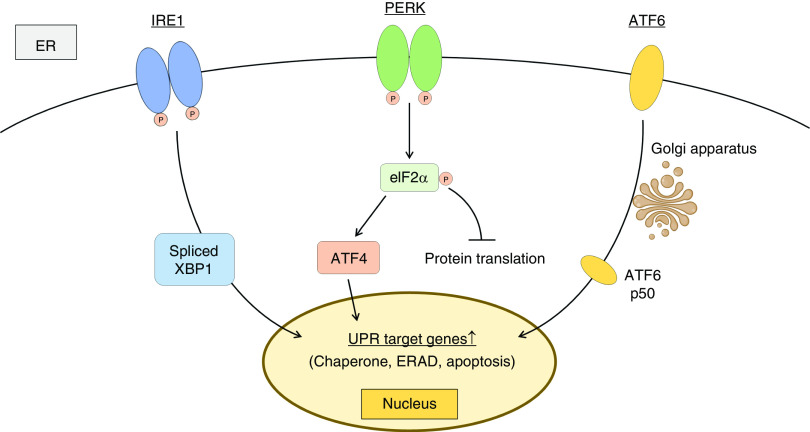Figure 3.
Unfolded protein response (UPR) pathways are the cellular response to endoplasmic reticulum (ER) stress. UPR pathways consist of three sensors: inositol-requiring enzyme 1 (IRE1), protein kinase R-like endoplasmic reticulum kinase (PERK), and activating transcription factor 6 (ATF6), which are activated under ER stress. Activated IRE1 induces the splicing of X-box binding protein 1 (XBP1) mRNA. Activated PERK phosphorylates (P) eukaryotic initiation factor 2α (eIF2α), which promotes the translation of ATF4 and suppresses the translation of other mRNAs to reduce unfolded proteins. ATF6 translocates to the Golgi apparatus and is cleaved to form an active fragment (ATF6 p50). Spliced XBP1, ATF4, and ATF6 p50 induce the transcription of various UPR target genes including chaperone, ER-asociated protein degradation (ERAD), and apoptosis-related genes.

